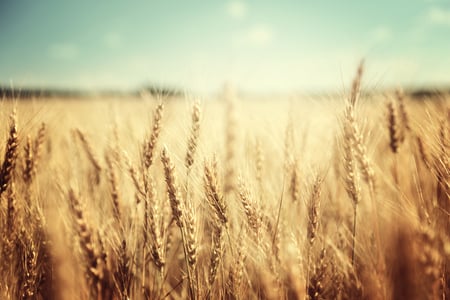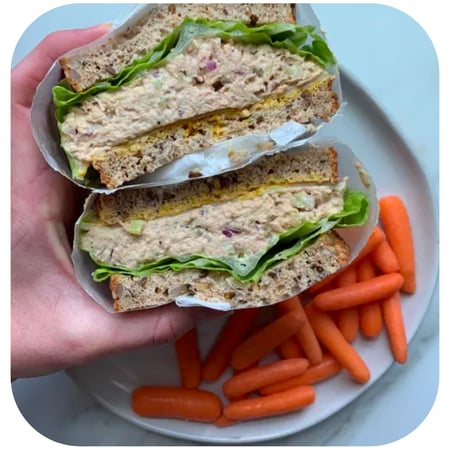
What do pizza and ice cream have in common? Well, they contain hot-topic ingredients like gluten and dairy. If you’ve fallen victim to the latest fad diet, you might be thinking, “wait, aren’t gluten and dairy unhealthy?”. Think again, unless you’re suffering from a food allergy or intolerance (affecting only about 1% of the population by the way), cutting out entire food groups might be causing more harm than help. Let’s explore the science behind common dietary restrictions, and find out what exactly these controversial foods are really doing for our bodies!
Dairy
Dairy has been a dietary staple for decades, with products ranging from cheese, milk, whey, yogurt, butter, and ice cream. In recent years, non-dairy alternatives have become increasingly popular causing consumption of cow's milk and many traditional dairy products to decline! By cutting dairy out of your life, you might be missing out on some pretty important nutrients.
Dairy provides us with calcium, potassium, vitamin D and protein. Choosing dairy products that are high in saturated fat and cholesterol, like full fat cheeses and milks may lead to health implications down the road. Diets high in saturated fats raise "bad" cholesterol (LDL) levels in the blood. High LDL cholesterol, increases the risk for heart disease and stroke. To help keep blood cholesterol levels in check, swap our higher-fat dairy foods for their low-fat or fat-free counterparts.
Children, however, can benefit from drinking full fat dairy. The Dietary Guidelines for Americans recommends that children over the age of 2 drink between 2 to 3 cups of milk a day, swapping the full fat for low fat at the age of 2 year. Milk provides them with essential vitamins and minerals that play a key role in their growth and development.
Plant-Based Dairy
Plant-based alternatives can be made from a variety of different nuts, beans, and grains. Some of the most popular options include: soy, almond, cashew, coconut, hemp, flax, oats, and rice. These products can often be filled with tons of sugar and additives, and are typically recommended for those who are lactose intolerant, have a dairy sensitivity, or are vegan.
When choosing non-dairy alternatives, it’s important to check the label and ingredient list. Try to avoid any added sugars, especially in milk and yogurt options. Additionally, watch out for Carrageenan; a seaweed used as a thickener and emulsifier in foods like non-dairy alternatives. Recent research has shown that carrageenan can cause gastrointestinal inflammation, lesions and even colon cancer! If you’re using alternatives multiple times daily; it might be best to find product without it.
Should You be Cutting Out Dairy?
Lactose Intolerance is a common problem that occurs when the body cannot digest lactose- a natural sugar found in dairy. It's generally recommended to limit most dairy products, however, some lactose intolerant people might be able to handle hard cheeses and yogurts since they're digested easier. In short, limiting or eliminating dairy products is different for every individual.
A milk allergy differs from lactose intolerance in that it affects the immune system as well. Symptoms such as hives, wheezing, and vomiting can occur immediately following the consumption of milk products, specifically due to the proteins in milk- whey and casein. For someone with a milk allergy, it's recommended to avoid milk and milk proteins completely.
Unless you have either of these two conditions, or choose to avoid animal products due to veganism, dairy is a nutritious food that can and should be part of your balanced diet.
Gluten
Gluten seems to be the latest polarizing word in the nutrition and weight loss world. Even Jimmy Kimmel has featured gluten in a recent late-night segment. However, not enough people know what it is, what foods contain it, and what (if any) impact it can have on weight loss.
Let's break down gluten from a nutrition perspective: gluten is a protein composite found in wheat and other grains. It’s what gives breads and other gluten-containing foods its elasticity and chewy texture. In addition to its traditional use in bread products, gluten is also a used to produce imitation meats (beef, chicken), and is present in beer, some condiments (ketchup), and soy sauce.

Am I “Allergic” to Gluten?
A gluten “allergy” is called Celiac Disease, and it affects ~1% of individuals in the US and UK. Celiac is an auto-immune disease, in which the gluten protein activates a specific immune response to attack the villi, the tissue within the small intestine responsible for nutrient absorption. Celiac has more than 300 known symptoms, which makes it difficult to diagnose. Early health and nutrition issues may include abdominal bloating, gas, diarrhea and vomiting, migraine and joint pain. Type 1 Diabetes, osteoporosis, anemia, and even infertility are just a few of the long term health impacts. Celiac is hereditary, carrying a 10% chance of development if one parent has the disease.
What To Do If You Have Celiac or Are Gluten Sensitive
If you believe you may have Celiac or be gluten-sensitive, consult a medical professional. Only a doctor can perform the tests listed above to properly diagnose either condition. If you have modified your diet to be gluten-free, your doctor may recommend you temporarily return to eating foods containing gluten in order to confirm positive symptoms.
Presuming that you are medically diagnosed with either Celiac or a gluten sensitivity, the only known treatment is to adhere to a strict gluten-free diet. It's possible to maintain a balanced diet without gluten-containing foods. Starchy vegetables, beans, legumes, and certain grains like quinoa are all naturally gluten free. For all manufactured or packaged products, check the ingredients list for any sign of gluten (think wheat, barley, rye, etc).
Gluten and Weight Loss
There is no medical or academic evidence to suggest that a gluten-free diet promotes weight loss. However, a nutritious gluten-free diet may result in the consumption of less processed foods like whole grains, fruits, vegetables, and lean meats. These choices are often packed with nutrients, lower in calories, and higher in fiber. The end result is an improved diet, a more mindful approach to eating, and greater likelihood of weight loss.
Keep in mind that not all gluten-free foods are nutritious. In recent years, food manufacturing companies have taken to producing gluten-free cookies, cakes, and other sweet treats, Many gluten-free food varieties have more calories and higher sodium than their standard counterparts. Additionally they tend to have more sugar and less fiber, both of which can work against your weight loss goals. As with any indulgent food, moderation is key!
The Final Word
Needless to say, restrictive diets not warranted by a medical condition may actually throw a wrench in your nutrition and weight loss goals! If you do decide to embark down this path, consult with a Registered Dietitian who can provide a structured meal plan to meet your goals without giving up the foods you love. A balanced diet that's portion controlled is going to be more effective for weight loss than a medically unnecessary elimination diet. However, if you have regular abdominal bloating, gas, diarrhea, you absolutely need to talk to your doctor about being tested for any allergy or sensitivity.

Gal Shua-Haim is a registered dietitian and recipe developer. She has an all foods fit approach when it comes to nutrition. Her overall goal is to simplify your life in the kitchen by showing you that eating healthy can be easy without compromising taste.




